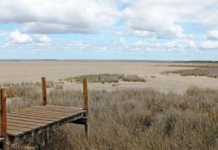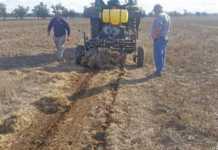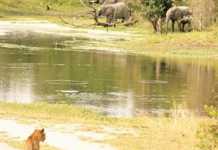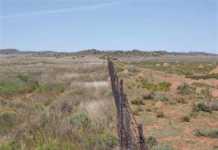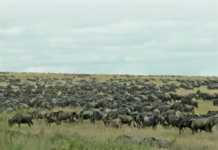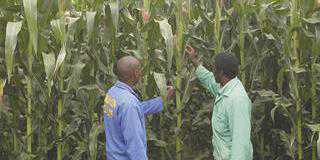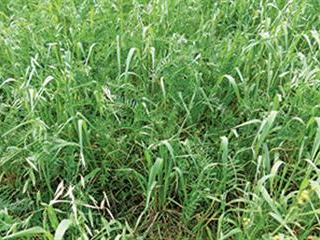
The eastern Free State Highveld ranks among the finest livestock farming areas of the world. Think about it. Where else will you find such a healthy climate where you’ll be able to graze low-cost, high quality pastures throughout the year? Unfortunately, most farmers in the region prefer to play the high risk cash crop game, even if the big profits promised by the flashing lights continue to elude them. True, the winning bell rings occasionally, but the millions garnered are quickly swallowed up by replacing ageing agricultural equipment with bigger and more expensive farming tools needed to continue ‘gambling’.
The fact is, there are far more lucrative cash crop regions than the eastern Free State – while, as noted, few areas can match its pasture and livestock production potential. So, isn’t it time to do the right thing in this region and invest more in livestock and top quality pastures? This is an investment that grows while you sleep.
Having said this, I should point out it’s still possible to get beef farming wrong here. The standard practice is to graze herds on veld in the summer months. This in itself is not incorrect, but two conditions apply. Firstly, the veld must be well managed. Secondly, the utilisation period should be restricted to four or five months in the year – that is, from November to March. (Keep in mind I’m referring to top levels of livemass gain per hectare.)
.gif)
Atrocious
Currently, however, the general standard of veld management is atrocious, and this has resulted in a radical decline in veld productivity and feed value. And, of course, veld is used just about every month of the year, even at times when its feed value is at its lowest. Pulling animals through the winter has largely been reduced to grazing maize residues. When these are depleted, the most costly – and least productive – phase kicks in: feeding livestock low quality Eragrostis or Smuts finger grass hay.
What amazes me is that few farmers know why this is so costly. They’re aware that fertilisation of the pasture and the cutting and baling operations are expensive, but they seem oblivious to the fact that by feeding low quality grass hay they’re throwing money away.
Nutrients
I recently tested an Eragrostis sample for a client (see table). Let’s evaluate it in terms of its ability to meet the nutrient requirements of the gestating cows. I’ll focus on digestible protein, because this is the nutrient most lacking in poor quality hay and winter veld.
The test showed that all the nutrients, with the exception of manganese (Mn) and iron (Fe) are at a very low level.
Sulphur, like phosphorus, is a macronutrient essential for the production of quality protein that resists breakdown in the rumen.
And I can’t help but digress here to point out that, in cases where pastures are very high in nitrogen (protein), the nitrogen/sulphur ratio should be no higher than 10:1. Any higher, and there’s a danger of animals suffering from sub-clinical nitrate poisoning, which can lead to sudden death. The way to prevent this is to ensure that the soil has sufficient sulphur and a full complement of essential minerals.
Now let’s talk about digestible protein (DP). A 500kg gestating cow needs about 0,36kg of digestible protein a day. The hay tested only had 1,35% DP. It’s unlikely that a cow would be able to ingest 10kg of such low quality hay per day, but if it did, it would take in only 0,135kg DP a day, a mere 10% of its requirements. To get all the protein it needs, the cow would have to consume 27kg of hay a day, which is impossible!
Let’s consider a targa oats/grazing vetch winter pasture with a DP of 22%. Here, the cow will only have to ingest 1,6kg to supply its full protein requirements. Full feeding of gestating cows on such rich forage is wasteful. One way to get round this is to graze them for no more than two hours a day on the lush pasture and then turn them out on to rested veld for the remaining 22 hours.
I’ll be returning to the eastern Free State in subsequent columns.
John Fair is a leading expert on pastures. Contact him on 058 622 3585 or at [email protected]. Please state ‘Biological farming’ in the subject line of your email.

